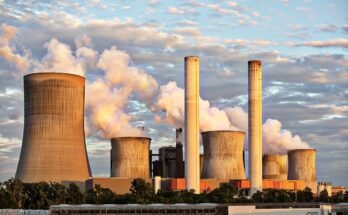THIS LANDS THE SEAYNE IN THE WHERE THE NERDs GOSign up for the monthly humanities mailing list to receive the scoop on the latest happenings in the field. It is written up of three layers, air, water, and land which are important for the life of the human being. It includes natural ecosystems as well as human-designed environments, and both have profound effects on the ways we live, work, and engage with one another and the world around us.
The Natural Environment
These ecosystems consist of the air, water, and land in the environment, as well as all the biodiversity (animals and plants) that reside in these ecosystems. It encompasses forests, oceans, rivers, mountains and the atmosphere — all of which have a significant impact on human well-being.
It is in our DNA to use what Mother Nature has to offer. Agricultural production, for example, is based on the availability of fertile soil and predictable weather patterns, while industrial production is based on the use of raw materials such as wood, metals and fossil fuels. Yet the natural environment has been altered substantially because of human activity through the years. The growing human Footprint has led to deforestation, and climate change, and pollution.
The Built Environment
The built environment includes all of the human-made space in which people live and work. It includes buildings, homes, workplaces, highways, schools, and parks. While the natural world is painstakingly formed over millions of years, the infrastructure we create is a product of human ingenuity — with a goal of uplifting our lives.
This urbanization has been one of the most powerful trends of the last century, with the urban population having far exceeded that of rural areas. With this process came the development of infrastructures needed to sustain everyday life, including roadways, bridges, utility systems, and communication systems. At the same time, it has created its own set of problems like overpopulation, pollution, increase of social problems like inequality.
The way our built environment is designed actually shapes our behaviour and affects our health. Access to green spaces has been associated with better mental well-being, while densely populated living conditions can drive stress and anxiety. Likewise, walkable neighborhoods with access to public transport promote healthier lifestyles than car-dependent cities, where sedentary habits are more prevalent.
The Social Environment
That’s because, as much as physical environment, so the social environment — that is the cultural meaning we accord to life — also strongly impinges on human life. But what is the social environment around this? The ties, communities, structures and the ethos that define human societies. It determines whom we relate to, what values we promote and what tools we make available.
As the world becomes increasingly globalized, so does the social environment. Sharing Finally, the way we share with each other has changed over the years, with social media and other online channels, enabling collaboration, but also issues in privacy and health.The approach of societies to problems such as poverty, education and human rights also reflects the values ingrained in the social environment.
All human activity in the environment
All forms of human activity have a contributory effect to environment from the great pollution to the reduce of dezenasjoner. On one hand, progress in agriculture, medicine, and technology have lodged more people on the cusp of flourishing and improved living standards globally. On the other side, industrialisation, urbanisation and overconsumption have resulted in ecological degradation, climate change and extinction of species.
Climate change represents one of the most significant issues of our time. Driven by greenhouse gas emissions from the burning of fossil fuels, deforestation and other industrial activities, climate change is altering weather patterns, raising sea levels and generating extreme weather events. It threatens the ecosystems upon which life on Earth depends, and the lives and livelihoods of people, especially in vulnerable regions.
There are also big consequences to pollution due to human activity. Pollution of air, water and soil can wreak havoc on health and ruin ecosystems.Plastic waste in the seas, for example, endangers ocean life but also ends up in the human food chain and ultimately endangers the human race.
The deforestation is another big issue. Forests play a key role in regulating climate, conserving biodiversity, and providing ecosystem services on national scale. But vast stretches of forests are being razed for farming, logging and urban development, which in turn drive climate change and species extinction.
Advancing Towards Sustainable Development
With great challenges that impact to both natural and built environments, sustainability becomes a postulate for human development. All this is sustainable development, is development that meets the needs of the present without compromising the ability of future generations to meet their own needs. It is about achieving economic growth without compromising environmental protection and attains social equity.
In order to achieve sustainability, we must shift to renewable energy, halve waste (both in terms of throwaways and pollution) and preserve our natural ecosystems. Actions like trees planting, implementing clean technologies, climate smart agriculture, etc., are some of the important measures to minimize human destruction on earth.
Further, the transition to circular economies, in which products are built and engineered to be reused and recycled, is also critical to reduce waste and conserve resources. Sustainable living4Governments, businesses, and individuals need to collaborate in designing policies and practices that promote these sustainable lifestyles and protect our planet for the future.
Conclusion
Our world is a complex system where the natural (built, social) environments interact to create our surroundings. The decisions we make today will shape the planet — and what life may look like for future generations. The interdependence and interaction of human activities and the environment is the prerequisite that must be identified to achieve a sustainable and dual-adaptive world. It is with responsibility of our actions, growing sustainable human practices, and working hand in hand, that we can ensure the human environment a place where man and nature flourish.



